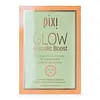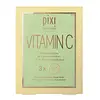What's inside
What's inside
 Key Ingredients
Key Ingredients

 Benefits
Benefits

 Concerns
Concerns

 Ingredients Side-by-side
Ingredients Side-by-side

Water
Skin ConditioningDipropylene Glycol
HumectantGlycerin
HumectantGlycolic Acid
BufferingPanax Ginseng Root Extract
EmollientAloe Arborescens Leaf Extract
MoisturisingPanax Ginseng Callus Culture Extract
Skin ConditioningCamellia Sinensis Leaf Extract
AntimicrobialCucumis Sativus Extract
Skin ConditioningCastanea Sativa Seed Extract
Skin ConditioningDioscorea Japonica Root Extract
Skin ConditioningOcimum Basilicum Seed Extract
AntioxidantHamamelis Virginiana Extract
AntiseborrhoeicMorus Alba Bark Extract
Skin ConditioningAsiaticoside
AntioxidantCoix Lacryma-Jobi Ma-Yuen Seed Extract
Skin ConditioningIllicium Verum Fruit Extract
PerfumingTrehalose
HumectantCeramide AP
Skin Conditioning1,2-Hexanediol
Skin ConditioningPropanediol
SolventCaprylyl Glycol
EmollientEthylhexylglycerin
Skin ConditioningPotassium Hydroxide
BufferingXanthan Gum
EmulsifyingButylene Glycol
HumectantDisodium EDTA
Water, Dipropylene Glycol, Glycerin, Glycolic Acid, Panax Ginseng Root Extract, Aloe Arborescens Leaf Extract, Panax Ginseng Callus Culture Extract, Camellia Sinensis Leaf Extract, Cucumis Sativus Extract, Castanea Sativa Seed Extract, Dioscorea Japonica Root Extract, Ocimum Basilicum Seed Extract, Hamamelis Virginiana Extract, Morus Alba Bark Extract, Asiaticoside, Coix Lacryma-Jobi Ma-Yuen Seed Extract, Illicium Verum Fruit Extract, Trehalose, Ceramide AP, 1,2-Hexanediol, Propanediol, Caprylyl Glycol, Ethylhexylglycerin, Potassium Hydroxide, Xanthan Gum, Butylene Glycol, Disodium EDTA
Water
Skin ConditioningDipropylene Glycol
HumectantGlycerin
Humectant1,2-Hexanediol
Skin ConditioningGlucose
Humectant3-O-Ethyl Ascorbic Acid
Skin ConditioningCaffeine
Skin ConditioningFerulic Acid
AntimicrobialCamellia Sinensis Leaf Extract
AntimicrobialCitrus Aurantium Dulcis Peel Oil
MaskingGlycyrrhiza Glabra Root Extract
BleachingCitrus Limon Fruit Extract
MaskingHippophae Rhamnoides Fruit Extract
Skin ConditioningNiacinamide
SmoothingSodium Hyaluronate
HumectantEthylhexylglycerin
Skin ConditioningXanthan Gum
EmulsifyingPolyglyceryl-4 Caprate
EmulsifyingPropanediol
SolventCellulose Gum
Emulsion StabilisingLimonene
PerfumingWater, Dipropylene Glycol, Glycerin, 1,2-Hexanediol, Glucose, 3-O-Ethyl Ascorbic Acid, Caffeine, Ferulic Acid, Camellia Sinensis Leaf Extract, Citrus Aurantium Dulcis Peel Oil, Glycyrrhiza Glabra Root Extract, Citrus Limon Fruit Extract, Hippophae Rhamnoides Fruit Extract, Niacinamide, Sodium Hyaluronate, Ethylhexylglycerin, Xanthan Gum, Polyglyceryl-4 Caprate, Propanediol, Cellulose Gum, Limonene
Ingredients Explained
These ingredients are found in both products.
Ingredients higher up in an ingredient list are typically present in a larger amount.
1,2-Hexanediol is a synthetic liquid and another multi-functional powerhouse.
It is a:
- Humectant, drawing moisture into the skin
- Emollient, helping to soften skin
- Solvent, dispersing and stabilizing formulas
- Preservative booster, enhancing the antimicrobial activity of other preservatives
Camellia Sinensis Leaf Extract is derived from the leaves of the tea plant. Black tea, green tea, and oolong tea are all harvested from this plant.
This ingredient has many skin benefits:
This ingredient contains polyphenols, a strong antioxidant. Antioxidants help fight off molecules that damage skin cells.
On top of that, the antioxidants in green tea neutralize free-radicals from the sun. This gives the skin some extra UV protection, but should not replace sunscreen.
Many components of tea have anti-inflammatory properties.
Polyphenols and L-theanine help soothe the skin and reduce irritation. The caffeine in Camellia Sinensis Leaf Extract helps calm inflamed blood vessels.
Other compounds found in tea include: Vitamin Bs, linoleic acid, magnesium, calcium, iron, and zinc.
Research has shown both drinking Camellia Sinensis Leaf Tea and applying it to the skin can help boost skin elasticity and hydration. Studies also show using tea extract may reduce sebum, or oil, production.
Learn more about Camellia Sinensis Leaf ExtractDipropylene Glycol is a synthetically created humectant, stabilizer, and solvent.
This ingredient helps:
Dipropylene glycol is technically an alcohol, but it belongs to the glycol family (often considered part of the ‘good’ alcohols). This means it is hydrating and gentle on skin unlike drying solvent alcohols like denatured alcohol.
As a masking agent, Dipropylene Glycol can be used to cover the smell of other ingredients. However, it does not have a scent.
Studies show Dipropylene Glycol is considered safe to use in skincare.
Learn more about Dipropylene GlycolEthylhexylglycerin (we can't pronounce this either) is commonly used as a preservative and skin softener. It is derived from glyceryl.
You might see Ethylhexylglycerin often paired with other preservatives such as phenoxyethanol. Ethylhexylglycerin has been found to increase the effectiveness of these other preservatives.
Glycerin is already naturally found in your skin. It helps moisturize and protect your skin.
A study from 2016 found glycerin to be more effective as a humectant than AHAs and hyaluronic acid.
As a humectant, it helps the skin stay hydrated by pulling moisture to your skin. The low molecular weight of glycerin allows it to pull moisture into the deeper layers of your skin.
Hydrated skin improves your skin barrier; Your skin barrier helps protect against irritants and bacteria.
Glycerin has also been found to have antimicrobial and antiviral properties. Due to these properties, glycerin is often used in wound and burn treatments.
In cosmetics, glycerin is usually derived from plants such as soybean or palm. However, it can also be sourced from animals, such as tallow or animal fat.
This ingredient is organic, colorless, odorless, and non-toxic.
Glycerin is the name for this ingredient in American English. British English uses Glycerol/Glycerine.
Learn more about GlycerinPropanediol is an all-star ingredient. It softens, hydrates, and smooths the skin.
It’s often used to:
Propanediol is not likely to cause sensitivity and considered safe to use. It is derived from corn or petroleum with a clear color and no scent.
Learn more about PropanediolWater. It's the most common cosmetic ingredient of all. You'll usually see it at the top of ingredient lists, meaning that it makes up the largest part of the product.
So why is it so popular? Water most often acts as a solvent - this means that it helps dissolve other ingredients into the formulation.
You'll also recognize water as that liquid we all need to stay alive. If you see this, drink a glass of water. Stay hydrated!
Learn more about WaterXanthan gum is used as a stabilizer and thickener within cosmetic products. It helps give products a sticky, thick feeling - preventing them from being too runny.
On the technical side of things, xanthan gum is a polysaccharide - a combination consisting of multiple sugar molecules bonded together.
Xanthan gum is a pretty common and great ingredient. It is a natural, non-toxic, non-irritating ingredient that is also commonly used in food products.
Learn more about Xanthan Gum